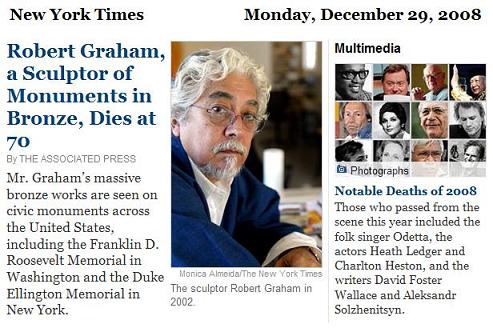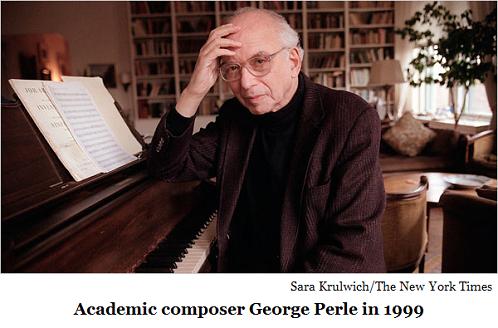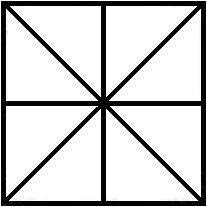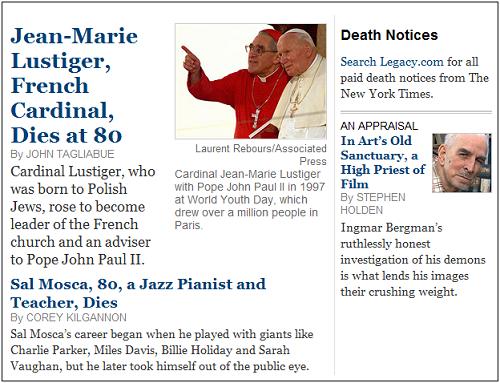Friday, September 1, 2017
That Old Jew
Saturday, October 14, 2023
Review
|
Robert Stone " 'That old Jew gave me this here.' Egan looked at the diamond. 'I ain't giving this to you, understand? The old man gave it to me for my boy. It's worth a whole lot of money– you can tell that just by looking– but it means something, I think. It's got a meaning, like.' 'Let's see,' Egan said, 'what would it mean?' He took hold of Pablo's hand cupping the stone and held his own hand under it. '"The jewel is in the lotus," perhaps that's what it means. The eternal in the temporal. The Boddhisattva declining nirvana out of compassion. Contemplating the ignorance of you and me, eh? That's a metaphor of our Buddhist friends.' Pablo's eyes glazed over. 'Holy shit,' he said. 'Santa Maria.' He stared at the diamond in his palm with passion. 'Hey,' he said to the priest, 'diamonds are forever! You heard of that, right? That means something, don't it?'
'I have heard it,' Egan said. 'Perhaps it has a religious meaning.' "
"We symbolize logical necessity — Keith Allen Korcz |

Tuesday, May 30, 2017
Diamond Bits
Or: Putting the Pinter in Pinterest
|
From "A Poem for Pinter" Log24 on Oct. 13, 2005 The Guardian on Harold Pinter, winner of this year's Nobel Prize for Literature: "Earlier this year, he announced his decision to retire from playwriting in favour of poetry," Michael Muskal in today's Los Angeles Times: "Pinter, 75, is known for his sparse and thin style as well as his etched characters whose crystal patter cuts through the mood like diamond drill bits." Robert Stone, A Flag for Sunrise (See Jan. 25): "'That old Jew gave me this here.' Egan looked at the diamond…. 'It's worth a whole lot of money– you can tell that just by looking– but it means something, I think. It's got a meaning, like.' 'Let's see,' Egan said, 'what would it mean?' He took hold of Pablo's hand cupping the stone and held his own hand under it. '"The jewel is in the lotus," perhaps that's what it means. The eternal in the temporal….'" |
See as well an image in a link target from today's noon post —
Sunday, March 16, 2014
Old Jew
Friday, April 29, 2011
Times Square Church
"For Mr. Lumet, location mattered deeply."
— April 9th online New York Times
"That old Jew gave me this here."


Larger image (1.5 MB)
Thursday, February 19, 2009
Thursday February 19, 2009
A Sunrise
for Sunrise
“If we open any tract– Plastic Art and Pure Plastic Art or The Non-Objective World, for instance– we will find that Mondrian and Malevich are not discussing canvas or pigment or graphite or any other form of matter. They are talking about Being or Mind or Spirit. From their point of view, the grid is a staircase to the Universal, and they are not interested in what happens below in the Concrete.”
Yesterday’s entry featured a rather simple-minded example from Krauss of how the ninefold square (said to be a symbol of Apollo)

may be used to create a graphic design– a Greek cross, which appears also in crossword puzzles:

Illustration by
Paul Rand
(born Peretz Rosenbaum)
A more sophisticated example
of the ninefold square
in graphic design:
“That old Jew
gave me this here.”
— A Flag for Sunrise
Saturday, January 24, 2009
Saturday January 24, 2009
"George Perle, a composer, author, theorist and teacher who won the Pulitzer Prize for music in 1986 and was widely considered the poetic voice of atonal composition, died on Friday [Jan. 23, 2009] at his home in Manhattan. He was 93."
— The New York Times this morning
|
From this journal on June 15, 2004:
Kierkegaard on death:
For more on "the thought of the eternal," see the discussion of the number 373 in Directions Out and Outside the World, both of 4/26/04. |
Monday, December 29, 2008
Monday December 29, 2008

Robert Stone,
"'That old Jew gave me this here.' Egan looked at the diamond. 'I ain't giving this to you, understand? The old man gave it to me for my boy. It's worth a whole lot of money– you can tell that just by looking– but it means something, I think. It's got a meaning, like.'
'Let's see,' Egan said, 'what would it mean?' He took hold of Pablo's hand cupping the stone and held his own hand under it. '"The jewel is in the lotus," perhaps that's what it means. The eternal in the temporal. The Boddhisattva declining nirvana out of compassion. Contemplating the ignorance of you and me, eh? That's a metaphor of our Buddhist friends.' Pablo's eyes glazed over. 'Holy shit,' he said. 'Santa Maria.' He stared at the diamond in his palm with passion." For further details, click on the diamond. |
Today's online Times on
the Saturday, Dec. 27,
death of an artist:

Mr. Wasserman wrote more than 75 scripts for television, the stage and the movies, including screenplays for 'The Vikings' (1958), a seafaring epic with Tony Curtis and Kirk Douglas, and 'A Walk With Love and Death' (1969), a John Huston film set in 14th-century Europe….
He feuded with… John Huston, who gave the lead female role in 'Walk' to his teenage daughter, Anjelica, against Mr. Wasserman's wishes. And he never attended ceremonies to receive the awards he won."
Accepting for Mr. Wasserman:
Mr. Graham's widow,
Anjelica Huston —
"Well…"
Monday, August 6, 2007
Tuesday, October 10, 2006
Tuesday October 10, 2006
Two Seconds

From Oct. 13 last year
(Yom Kippur):
|
A Poem for Pinter
Oct. 13, 2005 The Guardian on Harold Pinter, winner of this year's Nobel Prize for Literature: "Earlier this year, he announced his decision to retire from playwriting in favour of poetry," Michael Muskal in today's Los Angeles Times: "Pinter, 75, is known for his sparse and thin style as well as his etched characters whose crystal patter cuts through the mood like diamond drill bits." Robert Stone, A Flag for Sunrise (See Jan. 25): "'That old Jew gave me this here.' Egan looked at the diamond…. 'It's worth a whole lot of money– you can tell that just by looking– but it means something, I think. It's got a meaning, like.'
'Let's see,' Egan said, 'what would it mean?' He took hold of Pablo's hand cupping the stone and held his own hand under it. '"The jewel is in the lotus," perhaps that's what it means. The eternal in the temporal….'"
"Modal logic was originally developed to investigate logic under the modes of necessary and possible truth. The words 'necessary' and 'possible' are called modal connectives, or modalities. A modality is a word that when applied to a statement indicates when, where, how, or under what circumstances the statement may be true. In terms of notation, it is common to use a box [] for the modality 'necessary' and a diamond <> for the modality 'possible.'"
Commentary:
"Waka" also means Japanese poem or Maori canoe. (For instance, this Japanese poem and this Maori canoe.)
For a meditation on "bang splat," see Sept. 25-29. For the meaning of "tick tick," see Emily Dickinson on "degreeless noon." "Hash," of course, signifies "checkmate." (See previous three entries.) |
For language more suited to
the year's most holy day, see
this year's Yom Kippur entry,
from October 2.
That was also the day of the
Amish school killings in
Pennsylvania and the day that
mathematician Paul Halmos died.
For more on the former, see
Death in Two Seconds.
For more on the latter, see
The Halmos Tombstone.
Thursday, October 13, 2005
Thursday October 13, 2005
A Poem for Pinter
The Guardian on Harold Pinter, winner of this year's Nobel Prize for Literature:
"Earlier this year, he announced his decision to retire from playwriting in favour of poetry,"
Michael Muskal in today's Los Angeles Times:
"Pinter, 75, is known for his sparse and thin style as well as his etched characters whose crystal patter cuts through the mood like diamond drill bits."
Robert Stone, A Flag for Sunrise (See Jan. 25):
"'That old Jew gave me this here.' Egan looked at the diamond…. 'It's worth a whole lot of money– you can tell that just by looking– but it means something, I think. It's got a meaning, like.'
'Let's see,' Egan said, 'what would it mean?' He took hold of Pablo's hand cupping the stone and held his own hand under it. '"The jewel is in the lotus," perhaps that's what it means. The eternal in the temporal….'"
"Modal logic was originally developed to investigate logic under the modes of necessary and possible truth. The words 'necessary' and 'possible' are called modal connectives , or modalities . A modality is a word that when applied to a statement indicates when, where, how, or under what circumstances the statement may be true. In terms of notation, it is common to use a box [] for the modality 'necessary' and a diamond <> for the modality 'possible.'"
|
A Poem for Pinter
|
Commentary:
"Waka" also means Japanese poem or Maori canoe.
(For instance, this Japanese poem and this Maori canoe.)
For a meditation on "bang splat," see Sept. 25-29.
For the meaning of "tick tick," see Emily Dickinson on "degreeless noon."
"Hash," of course, signifies "checkmate." (See previous three entries.)
Tuesday, January 25, 2005
Tuesday January 25, 2005
Diamonds Are Forever
" 'That old Jew gave me this here.' Egan looked at the diamond. 'I ain't giving this to you, understand? The old man gave it to me for my boy. It's worth a whole lot of money– you can tell that just by looking– but it means something, I think. It's got a meaning, like.'
'Let's see,' Egan said, 'what would it mean?' He took hold of Pablo's hand cupping the stone and held his own hand under it. '"The jewel is in the lotus," perhaps that's what it means. The eternal in the temporal. The Boddhisattva declining nirvana out of compassion. Contemplating the ignorance of you and me, eh? That's a metaphor of our Buddhist friends.'
Pablo's eyes glazed over. 'Holy shit,' he said. 'Santa Maria.' He stared at the diamond in his palm with passion.
'Hey,' he said to the priest, 'diamonds are forever! You heard of that, right? That means something, don't it?'
'I have heard it,' Egan said. 'Perhaps it has a religious meaning.' "
"We symbolize logical necessity
with the box ![]() )
)
and logical possibility
with the diamond ![]() ).
).
From
DIALECTIC AND EXISTENCE
IN KIERKEGAARD AND KANT
Nythamar Fernandes de Oliveira
Pontifical Catholic University
at Porto Alegre, Brazil
"Such is the paradoxical 'encounter' of the eternal with the temporal. Just like the Moment of the Incarnation, when the Eternal entered the temporal, Kierkegaard refers to the category of the Instant (Danish Ojeblikket, 'a glance of the eye, eyeblink,' German Augenblick) as the dialectical kernel of our existential consciousness:
If the instant is posited, so is the eternal –but also the future, which comes again like the past … The concept around which everything turns in Christianity, the concept which makes all things new, is the fullness of time, is the instant as eternity, and yet this eternity is at once the future and the past.
Although I cannot examine here the Kierkegaardian conception of time, the dialectical articulation of time and existence, as can be seen, underlies his entire philosophy of existence, just as the opposition between 'eternity' and 'temporality': the instant, as 'an atom of eternity,' serves to restructure the whole synthesis of selfhood into a spiritual one, in man’s 'ascent' toward its Other and the Unknown. In the last analysis, the Eternal transcends every synthesis between eternity and time, infinity and finiteness, preserving not only the Absolute Paradox in itself but above all the wholly otherness of God. It is only because of the Eternal, therefore, that humans can still hope to attain their ultimate vocation of becoming a Chistian. As Kierkegaard writes in Works of Love (1847),
The possibility of the good is more than possibility, for it is the eternal. This is the basis of the fact that one who hopes can never be deceived, for to hope is to expect the possibility of the good; but the possibility of the good is eternal. …But if there is less love in him, there is also less of the eternal in him; but if there is less of the eternal in him, there is also less possibility, less awareness of possibility (for possibility appears through the temporal movement of the eternal within the eternal in a human being)."













